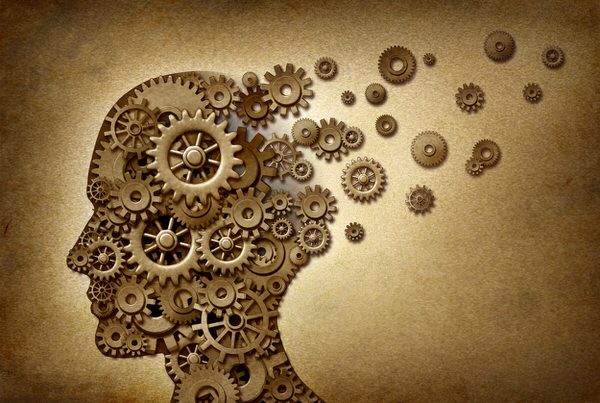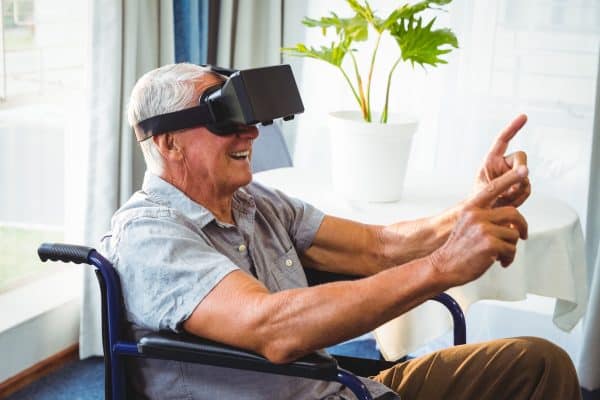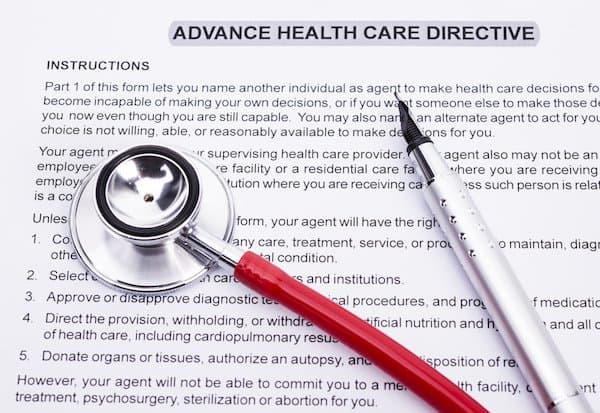Yale professor Dr. Becca Levy has shown that positive age beliefs help you live longer and experience fewer physical and mental challenges – things that historically were considered unavoidable aspects of the aging process. My last blog post summarized her research findings as discussed in Breaking the Age Code: How Your Beliefs About Aging Determine How Long & Well You Live.
This article covers Dr. Levy’s practical tips to improve the age beliefs you’ve been unconsciously for the past 40 or more years. Levy offers an ABC method, with exercises that help you reverse negative age beliefs.
Awareness: increase your awareness of age stereotypes
You’ve been internalizing age stereotypes unconsciously for years. Now it’s time to push yourself to bring them out into the open. It may seem hard at first. But once you start noticing negative age stereotypes, you start to see them everywhere.
Awareness exercises to improve your age beliefs
Five images of aging
Jot down the first 5 words or phrases that come to mind when you think about an older person. Evaluate your list: how many positives? How many negatives? These images will help you set personal priorities as you notice age stereotypes around you and work on improving your own age beliefs.
Portfolio of positive role models
List 4 older people you admire: friends/relatives, historical figures, people from movies, TV or books. For each model, pick 1-2 qualities you admire and hope to emulate as you grow older.
Notice age stereotypes in media
Use a notebook or the notes app on your phone to jot down negative and positive images of aging that you see in the course of a week in the news, online, or in TV shows. Notice when older people are included, how they are portrayed, and also when they are not included.
Multiple generations
Think about your 5 closest friends. Are they all about the same age as you are? How might you increase your intergenerational contact — younger as well as older? Think of yourself as an older person in training.
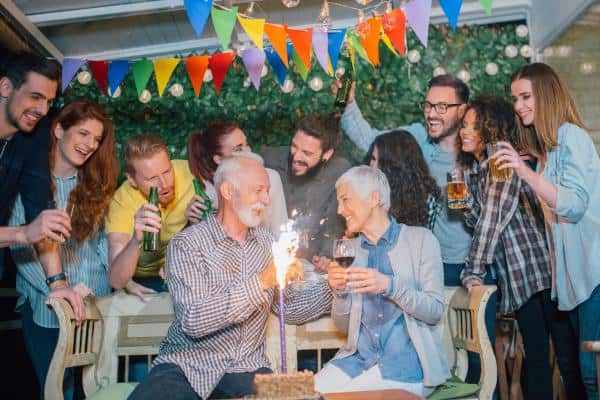
Blame: blame ageism, not aging
Once you’ve become more aware of ageism in our society, the logical next step is to place blame where blame is due. Realize that poor health outcomes among older people are often due to negative stereotypes about aging, not aging itself.
Blame-shifting exercises to improve your age beliefs
Who profits?
Write down 4 negative age stereotypes. For each one, name a company or institution that stands to profit from such a stereotype. An easy example is any of the “anti-aging” cosmetics you find on the market today.
Find the real cause
“Monitor yourself,” Levy says, “for when age stereotypes influence how you think about the cause of unpleasant events or challenges.” For example, stop saying Senior Moment, even as a joke. Memory lapses like losing your keys or forgetting a name can happen at any age. They don’t necessarily signal cognitive decline.
Likewise, notice if you blame a sore neck or back on getting older. It may be that you’ve developed bad ergonomic practices and are spending too much time hunched over your phone.
Flip the script
Levy notes that if you aren’t sure whether a reference to older people is truly ageist, reframe it so that the target is another marginalized group, like women or people of color. If the statement would be sexist or racist if the target were changed, you should consider labeling it ageist.
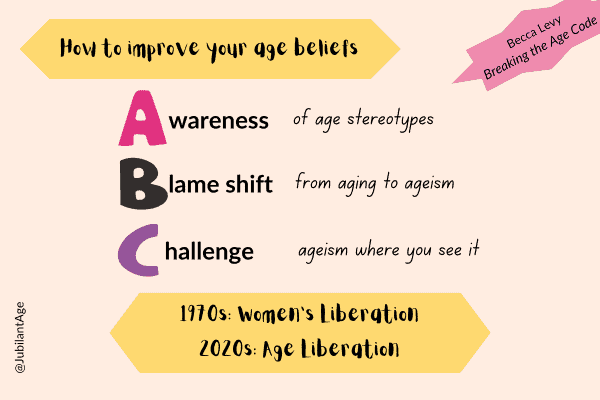
Challenge negative age beliefs
The World Health Organization (WHO) has identified ageism as a global issue holding widespread consequences for health, well-being, and human rights. Its comprehensive Global Report on Ageism describes and quantifies the impact of negative age beliefs on society and economics, and it offers a framework to address the systemic issues that give rise to ageism.
Even though global action to end ageism may seem daunting, real change starts on the individual level. Each of us can make a difference in her own sphere of influence.
Challenge exercises to improve your age beliefs
Dismantling negative age beliefs
Arm yourself with accurate information that challenges negative age stereotypes. You can practice what you might say to someone who brings them up in conversation. For example, if someone says, “Old people are terrible drivers,” you can reply that, actually, the absolute number of crashes involving older drivers is low. Research has shown that older individuals are more likely to use seat belts and follow speed limits and less likely to drive while texting, at night, or while intoxicated.
Levy lists more false age stereotypes with their corresponding facts in Appendix 2 of her book.
Find ways to get involved in politics
If you are politically inclined, run for office. Or support the campaigns of individuals who advocate public policies that advance the well-being of older people in the community. Learn more about advocacy against ageism from resources like The American Society on Aging or AARP’s Policy, Learning and Thought Research. Additional resources to learn about the economic and social impact of older people are listed at the end of this article.

Your efforts will pay off for you and others
Levy’s ABC process for improving your own age beliefs, which includes challenging stereotypes that exist in our society, will benefit more people than just yourself. It also can affect subsequent generations who are already internalizing negative age beliefs without even realizing it.
If enough of us “elders” improve our own age beliefs AND influence younger generations to confront ageism where they see it, the result will be better health and increased enjoyment in the later years for everyone.
Pay it forward
If this post has resonated with you, take a moment and share it with someone else. The more people who improve their age beliefs, the better the experience of getting older will be for all of us.
Images via AHR, Canva
Additional Resources
Levy, Becca. (2022). Breaking the age code: How your beliefs about aging determine how long and well you live (1st ed.)
Coughlin, Joseph F. (2017). The Longevity Economy: Unlocking the World’s Fastest-Growing, Most Misunderstood Market (standard ed.) By the founder of MIT’s AgeLab
Golden, Susan Wigner (2022). Stage (Not Age): How to Understand and Serve People Over 60–the Fastest Growing, Most Dynamic Market in the World (1st ed.) By the director of dciX at the Stanford Distinguished Careers Institute
Jenkins, JoAnn (2018). Disrupt Aging: A Bold New Path to Living Your Best Life at Every Age (reprint ed.) By the CEO of AARP
